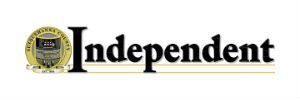BY PAT FARNELLI
Correspondent
A group of ham radio operators gathered at a Montrose home to demonstrate how their skills can be utilized in disaster and post-disaster situations, or employed in large, pre-planned, non-emergency activities such as marathons, parades, and fairs.
The group set up on Friday and had its open-house event on Saturday and Sunday at the home of Elmer and Becky Taylor. The ham operators demonstrated that they are able to quickly set up a variety of antennas and become operational virtually anywhere.
Club member John McEwing, a Susquehanna Depot resident, gave the tour of stations. He pointed out the various antennas erected around the site.
Some of the antennas are set up by throwing or hoisting wires into the air, McEwing said.
At the first station, Graham Furness, a 14-year-old ham radio operator, explained amateur radio systems to an interested family.
Furness has passed his technician exam and general exam and was using a 40-meter frequency Saturday.
The different levels of frequency are available according to the training level of the operator: for example, no technician may use a 20-meter bandwidth. Two meter or 1.25-meter frequencies can be used by operators at all levels.
A 15 meter station was set up nearby, and Darwin Muir and Ed Orthouse were at the controls.
A Morse Code station was manned by Lee Parsons, the president of the Susquehanna Amateur Radio Club, or SCARC.
Skip Ransom and Lee Knapp were relaying messages from a small building, named “Margaritaville,” with the help of computer tech Austin Knapp.
The group meets on the fourth Thursday of the month at Green Gables in New Milford at 6:30 p.m., and are seeking new members.
McEwing noted, “It’s symbiotic. You need us, and we want to help.”
He said that while operators are called amateurs, it is because they are not paid. “Our communication services are professional.”
For examples of emergencies when ham operators are called for assistance, McEwing cited a big snowstorm that occurred last year in Binghamton, NY. Ham operators handled communications when internet and telephone lines were out, and reported snowfalls and local power outages.
During the hurricane disasters in Houston and Puerto Rico, ham operators volunteered to go to the disaster areas to aid in communications until services were restored.
“Once the necessary introductions have been made, the rest is easy because Amateur Radio people are indeed the experts in meeting
communications requirements of every sort. This is what we love to do!”




Just a quick note to this interesting article. The computer tech is Austin Orthouse, not Austin Knapp.